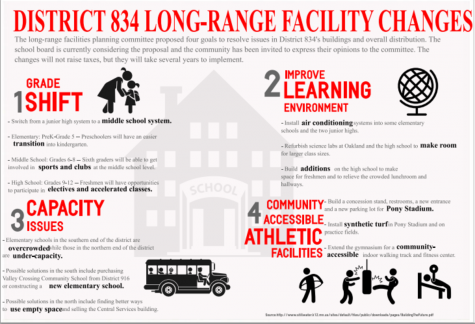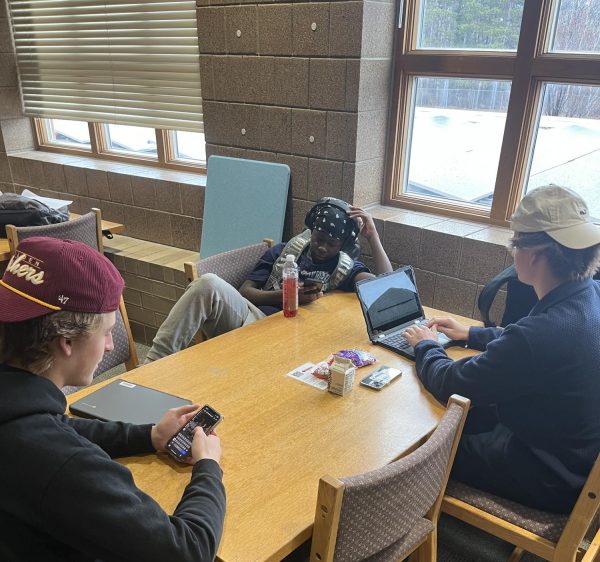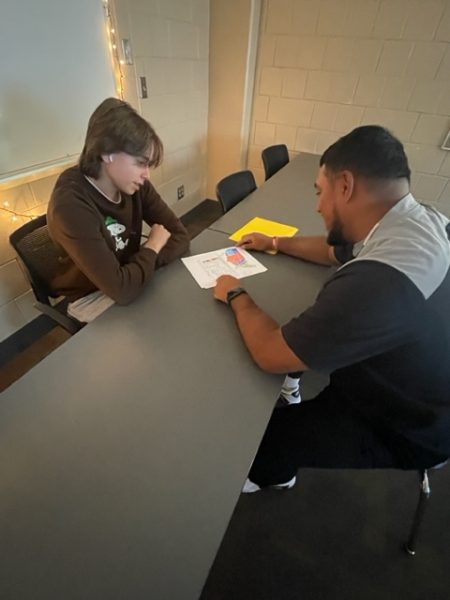Staff Editorial: no need to be skeptical about district changes

The long-range facilities planning committee proposed major changes to District 834’s current grade arrangement and distribution. Some community members are skeptical of the changes because technicalities still have to be worked out. The committee opened their ideas to the community to not only educate them about the plan, benefits and costs, but also to hear their concerns and suggestions. This is the right approach to turn the plan into a reality, and these changes will enhance the district to be one of the best in the state of Minnesota.
The proposals include relieving overcrowded buildings, improving students’ learning environment, opening the high school athletic facilities to the community and changing the district to a middle school system, with sixth graders in the junior highs and ninth graders in the high school.
The biggest change will certainly be the grade shift. The middle school system would make Stillwater like a majority of the schools in Minnesota. Sixth graders are old enough to learn from teachers who are specifically trained to teach certain subjects, and they will have opportunities to utilize science labs and other equipment at the junior highs that will facilitate their learning.
The benefits to ninth graders are enormous. Fifteen percent of ninth graders are already attending the high school for at least one hour a day. Freshman year is the first year on a high school transcript, so moving ninth graders to the high school will help them understand that their grades are important. They would have opportunities to take higher level classes, explore electives and focus on areas which interest them.
The big snag in the plan is where the high school will put approximately 600 additional students. Class sizes are already reaching maximum capacity at about 33 students per classroom. The main rotunda is heavily congested during passing time, and many kids are forced to stand, share chairs or find another place to eat their lunch because the cafeteria is packed.
The committee connected with architects to plan an addition to the high school. There has been concern over whether the extension will press into the practice fields or the Environmental Learning Center. Fortunately, these areas are safe. The additional classrooms will be placed on the ends of each wing, and the committee discussed constructing a hallway between the ends of the wings to relieve the traffic in the main hallway during passing time. The cafeteria will be extended into the patio area to alleviate the crowded lunchroom.
These changes to the high school are just the beginning of the committee’s plans. There are a number of things that will happen throughout the district to achieve the four long-range facility goals. The next concern is the price tag. The goals will cost the district between $90 million and $98 million. To taxpayers, this sounds like yet another tax increase to squeeze a few more dollars out of their pockets. But this project is actually tax-neutral, which means taxes will not increase; in fact, taxes will likely be lowered.*
Over the next few years, the district will make the final payments on Valley Crossing and Rutherford Elementaries. When those schools are paid off, there will be an opportunity to invest the tax money, which is reserved for facilities, into the long-range facility plan. All of these projects are possible without raising taxes, however taxpayers would still need to approve the investment. There is a possibility for a bond vote in May to make the final determination.
Before any election can take place however, the committee’s proposal must be approved by the school board. The board has been carefully considering the plan for several months and will likely have a decision soon. These improvements will be worth the time and the money, and will hopefully bring forth the next generation of innovators to continue to make Stillwater great.
*Sample ballot














Hannah Crawford • Feb 17, 2015 at 9:08 pm
I’m writing an article about this topic now and this story does a good job of looking at all the numbers of the project. It gives a nice snapshot of what will be happening in the community as well as how long it will take and how much it will all cost.